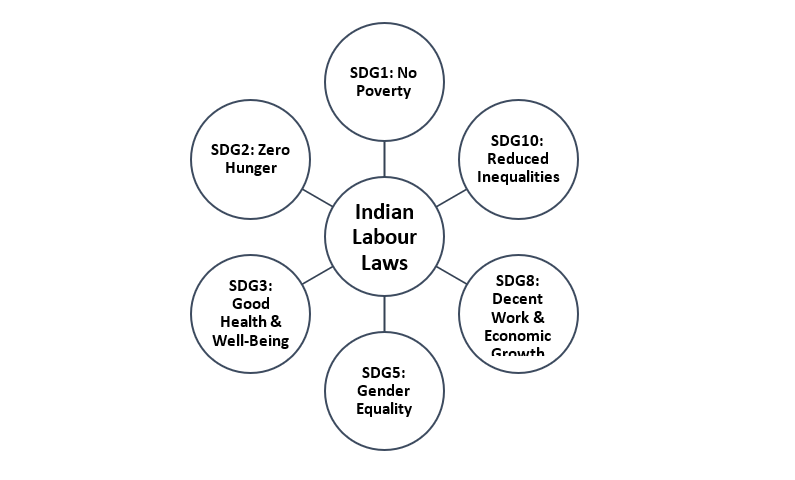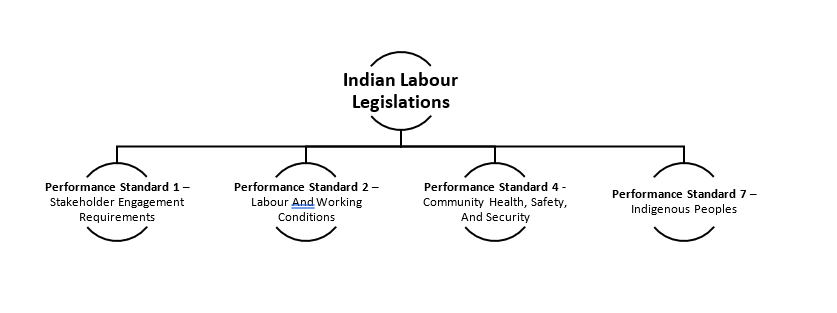Mr. Sonal Verma - Partner & Global Leader - Markets & Strategy Dhir & Dhir Associates is well acclaimed for his work in regulatory & compliance programs over the last decade. He had in the past worked with 1800 plus clients in India and 61 other countries globally. He has worked with the top 3 unicorns and many Fortune 500 companies. His clients have been across different industries, viz. Automotive and OEMs, Pharma and Life Sciences, Manufacturing, Chemical Industry, BFSI, Infrastructure and Utilities (including State-owned PSUs), e-Commerce and Fintech Companies, Diversified Conglomerates, etc.
Ms.Fauzia Khan - Legal Associate at Dhir & Dhir Associates is a Certified Compliance and Ethics Professional and a 2019 law graduate from Jitendra Chauhan College of Law, Mumbai University. Currently working as an independent legal professional, whereby she undertakes assignments such as contract drafting, formulate research projects and reports, create legal course content, deliver client oriented research and write articles and blogs for online platforms.

Every year, March is very crucial to the manufacturing industry in India as it is observed as the Safety Week Month. Globally, the principles of ESG (Environment, Social & Governance) are finding its way into the work life of every company. Indian companies also are getting aligned to principles laid down by UN SDG, IFC, GRI, etc. With the Covid-19 pandemic, companies have further realised the importance of sustainable business and ESG Principles. Most important is the wellbeing of employees (full time/part time or agency workers). The importance of ‘S’ in ESG has come to the forefront in the last 12 months and reiterating that ESG is not only about climate change!
In India, labour laws which may also be referred to as employment laws are more often than not considered as a complexed set of regulations, which need to be simplified to adapt to the changing labour markets. As part of the Concurrent List under the Constitution of India, both the Centre and the State have the power to enact laws on the subject matter. This resulted in a plethora of legislations, which resulted in the Second National Commission on Labour, 2002 recommending a consolidation of the laws to protect the interest of employees, encourage safe working conditions, efficiently adapt to latest business models and so on. Therefore, with the purpose of amalgamating the various regulatory provisions pertaining to workplace safety and working conditions, the Ministry of Labour & Employment emulated the existing labour laws in the country and subsumed them into three categories (still not in force) –
(i) The Occupational Safety, Health and Working Conditions Code, 2020;
(ii) The Social Security Code, 2020; and
(iii) The Industrial Relations Code, 2020
Labour laws are formulated on the principles of social welfare and justice which in turn contribute to economic development and international uniformity. Deriving its origin from the views and expressions of nationalist leaders, provisions of the Constitution of India and various International Conventions and Bodies; the fundamentals of labour laws cover aspects such as gender parity, right to work, prohibition of child labour, social security, right to organize and form trade unions and right to workplace safety. With reference to the Constitution of India, various human rights are seen enshrined under Chapter III, Articles 16, 19, 23 and 24 and Chapter IV, Articles 39, 41, 42, 43, 43A and 54, keeping in line with Fundamental Rights and Directive Principles of State Policy.
The consolidation of labour law legislations is aimed at providing a set of rationalized provisions that serve as a standard regulatory mechanism. The objective is to facilitate workplace safety which leads to ease of doing business in India. The consolidated Codes are formulated to address concerns pertaining to health & safety standards, training & development, leaves & work hours, working conditions and so on, thereby encouraging overall employee welfare and contribute to organizational growth and development.
Drawing a parallel between Indian laws and global standards
Sustainable Development Goals (SDGs) - Also referred to as global goals were adopted by all United Nations Member States in 2015 as a universal call to action, to end poverty, address climate change and ensure safe & healthy environment for all by 2030. The action recognized and integrated 17 SDGs having the potential to balance social, economic and environmental sustainability. These goals are beneficial to businesses as adhering to the same improves the company’s corporate security & resilience and further demonstrates its alignment with the national interest to uplift society.
When weighed together to determine common ground, the following of the 17 SDGs are seen to cover integral components of the Indian labour laws –

The International Financing Corporation (IFC) - Affiliated to the World Bank, IFC provides financing of private-enterprise investment in developing countries around the world, through both loans and direct investments. It also lays down a set of performance standards which are taken into consideration for management of environmental and social risks pertaining to an investment.
With reference to the IFC Performance Standards, the following can be used as a benchmark to determine the implementation of Indian laws in achieving workplace health and safety at a global level –

Some of the essential aspects of the Codes
(i) The Occupational Safety, Health and Working Conditions Code, 2020 –
● The new Code has come into effect by repealing 13 Central labour laws, which have been collated to regulate the workplace safety of employees in addition to regulating the employment of workers. The Code is formulated for the benefit and welfare of both the employer and employee and is created in a way that rather than being sector specific, it provides for regulations on the basis of the industry.
● Reiterating the commitment to ensure more stringent laws with respect to protection of women at workplace, the Code makes it a compliance requirement for employers to first seek consent of the woman employee being assigned work before 6:00 am and 7:00 pm. The employer shall further ensure safe travel measures, adequate health and safety measures and other relevant parameters pertaining to the establishment.
● The Code facilitates the provision of single registration, which reduces the burden of multiple registrations for the establishments. This will not just save the employer’s time and money but also lead to creating a centralized database for the country.
●To ensure adequate health and safety within the organization, the Codes mandate complimentary annual health check-ups for employees beyond a certain age group.
● In order to provide, formulize the employment structure in the country and to extend similar benefits to the unorganized sector as received by the organized sector; the Code makes it mandatory for the employer to issue an appointment letter for all sectors.
(ii) The Social Security Code, 2020
● The Code introduces several new elements into the legal framework, which previously did not form a part of the labour legislations in India. With the objective to uphold labour welfare in the country, the Code shall provide for schemes and establish organizations for the benefit of the employees.
● With reference to the Employees Provident Fund Scheme, all schemes under the Code shall also be financed via a combination of contribution between the employer and the employee. With regards to the gig and platform workers, the contribution may be three-fold i.e. in addition to the employer and employee, the appropriate government also contributes.
(iii) The Industrial Relation Code, 2020
● The Code consolidates three major legislations into one i.e. the Industrial Disputes Act, 1947; the Trade Union Act, 1926; and the Industrial Employment (Standing Order) Act, 1946.
● The Code provides for a broader spectrum with respect to certain definitions including the introduction of fixed term employment, thereby facilitating benefits to such an employee on similar lines as that of a permanent employee.
● The Code defines lay-offs, retrenchment and prohibits unfair labour practices. The objective is to rationalize compliance of labour laws and in turn contribute to business development.
Below is the list of some of the labour laws focused on workplace health and safety measures, which have been subsumed into either of the three categories of labour Codes.
| Sr. No. | Labour Law Legislations (Repealed into one of the above mentioned Codes) |
|---|---|
| 1. | The Factories Act, 1984 |
| 2. | The Employees’ State Insurance Act, 1948 |
| 3. | The Contract Labour (Regulation and Abolition) Act, 1970 |
| 4. | The Motor Transport Workers Act, 1961 |
| 5. | The Industrial Disputes Act, 1947 |
| 6. | The Trade Union Act, 1926 |
| 7. | The Industrial Employment (Standing Order) Act, 1946 |
| 8. | The Working Journalist and other News Paper Employees (Conditions of Service and Misc. Provision) Act, 1955 |
| 9. | The Building and Other Construction Workers (Regulation of Employment and Conditions of Service) Act, 1996 |
| 10. | The Inter-State Migrant workmen (Regulation of Employment and Conditions of Service) Act, 1979 |
Case Studies
Workplace safety without imbibing the element of ‘Gender Justice’ is unacceptable. Diversity, equality & inclusion are important pillars for balancing the physical & mental components of a worker, which gives a sense of contentment and encourages them to work happily, feeling secured to spending 8-10 hours at the workplace every day!
1. The infamous case of Vishaka vs. State of Rajasthan (1997) 6SCC 241 where a social worker, Bhanwari Devi, was gang raped by five men for preventing a child marriage. A petition was filed by Vishaka, a Group for Women’s Education and Research, who moved the Supreme Court raising the issue of sexual harassment at the workplace. Consequently, in 1997, the apex Court issued guidelines that defined sexual harassment and promoted the practice of providing a safe working environment for women. It was these guidelines which ultimately led to the constitution of Sexual Harassment of Women at Workplace (Prevention, Prohibition & Redressal) Act, 2013.
2. In a recent case of Naveen Kumar Vs. Employees State Insurance Corporation with Deepmala Vs. Employees State Insurance Corporation W.P.(C) 3956/2020 & W.P.(C) 4744/2020, Justice Prathiba M. Singh emphasized on how the labour courts were empowered to decide the merits pertaining to claims made by the workmen. The single judge bench reiterated how a writ petition in cases of labour laws could be availed only under exceptional circumstances, pursuant to reaching out to the appropriate industrial authority.
3. MC Mehta v. Union of India, AIR 1987 SC 1086 (1986) popularly known as the ‘Oleum gas leak case’ - In this case, the Court held that in the case of industries engaged in hazardous or inherently dangerous activities, the principle of absolute liability was to be followed. It further observed that the amount of compensation must be correlated to the magnitude and capacity of the industry, so that it will be a deterrent. This led to lots of legislative changes and gave voice to workers for getting workplace safety.
4. While dealing with a writ petition of Purna Chandra Sahoo Vs. State of Odisha & Ors W.P.(C) No. 17859 of 2013 challenging the non-release of payment under the Mahatma Gandhi National Rural Employment Guarantee Act, 2005 (MGNREGA), a single judge bench of the Orissa High Court headed by Dr. Justice B.R. Sarangi held that holding back of such payment has its adverse effect on the livelihood of people and is, therefore in violation of Article 21 of the Constitution of India which gives every person the right to live with dignity.
5. The Government on 13th February, 2021 issued an ‘SOP on preventive measures to contain spread of COVID-19 in offices’. The guidelines are aimed at providing the basic preventive measures to be undertaken by offices to contain the virus from spreading further. One of the key highlights of the guidelines would be to conduct virtual meetings and as far as possible, avoid large physical gatherings.
Conclusion
A work environment adequately structured to efficiently curb health and safety issues at workplace, is likely to be proportionate to a lower attrition rate within the organization. Workplace safety is not merely restricted to the ones hired for working in an establishment, but is equally applicable to the employers and is crucial, regardless of the size of the establishment. Well implemented measures create a structured framework between the employer and the workers. The latest Codes on labour laws are encapsulated into three distinct categories, thereby covering a wide ambit of human rights principles including safety of women at workplace, unsafe working conditions, equal pay and remuneration, diversity & inclusion, speedy redressal of disputes, ensure production and supply of goods to be in line with basic human needs & safety and to put implement a robust mechanism to curb occupational health & safety risks at workplace.
NEWSLETTER
TRENDING ON PRO MFG
MORE FROM THE SECTION









